“Time … is only a mode of thought.”
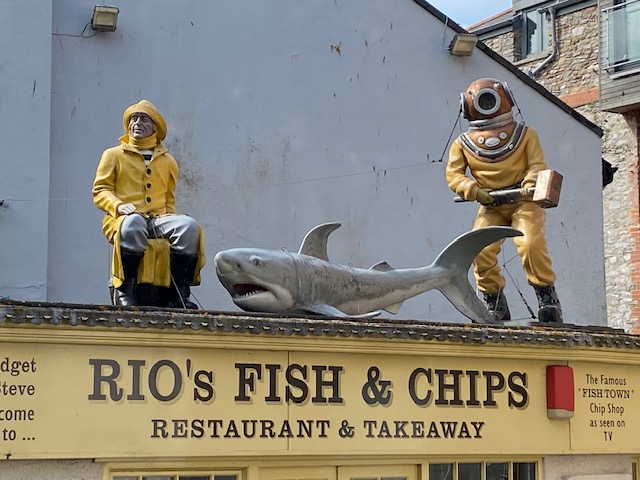
– Agatha Christie, English writer
Torquay (pronounced Tor-key) born; Dame Agatha Christie’s (1890-1976) quote best sums up our weekend spent along the English Riviera; visiting four distinct English countryside manors all seemingly suspended in time. Trivia: Torquay was the setting for the hilarious, old British mid-70s sitcom, “Fawlty Towers.”
Our dinnertime arrival reconnects me with my bestie, Jim, and his partner Chris, Torquay locals. Jim, as some of you may recall, was our wedding “Ring Boy,” distinctively dressed in his family’s fancy and formal Scottish kilt and regalia. Although we email weekly, an in-person visit, some six years later, was a cherished moment for us.

Torquay Marina 


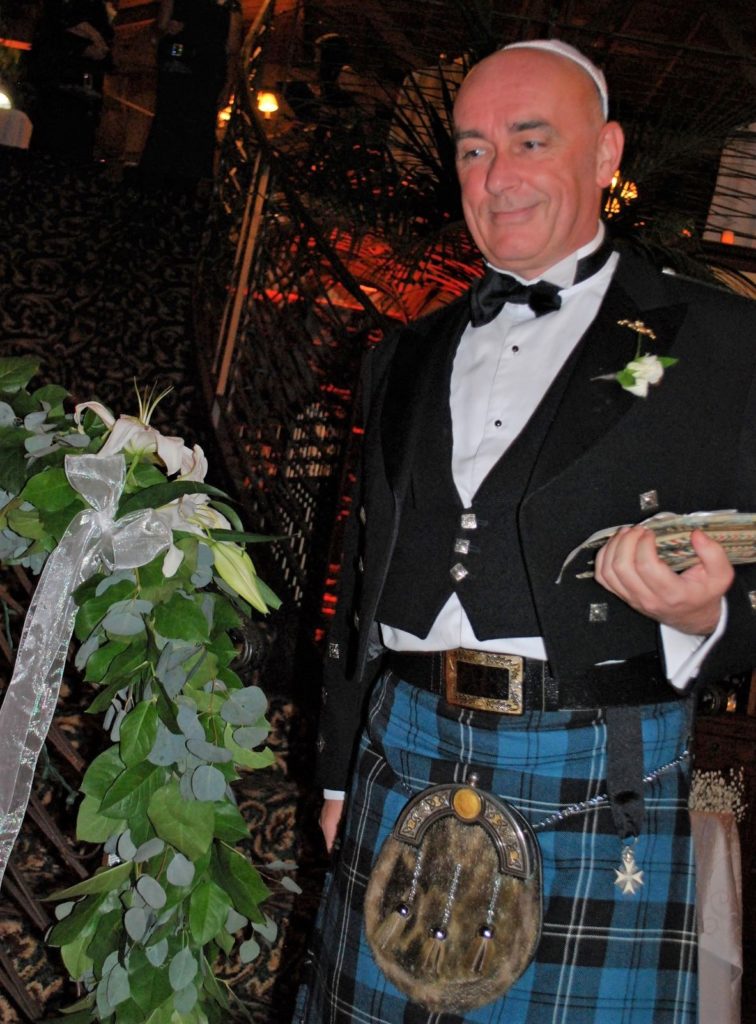
David devoured his ale battered Fish ‘n Chips (his second of the trip) with gigantic onion rings; (non-fried) Cod for me served over polenta, drizzled in basil pesto oil.
GREENWAY
We took a glimpse into the warm and cozy home life of the famous and much-loved, bestselling author, Agatha Christie, aka Queen of Crime, and her family holiday home and estate, Greenway, in Devon. She called it “the loveliest place in the world.” The relaxed and atmospheric Georgian house is still furnished as it was in the 1950s, filled with items from her childhood home, travels, etc. It seemed like any moment the family would arrive home, perhaps adding some new trinkets they discovered.
Greenway is situated in a large woodland garden which sweeps down the hillside towards the river Dart below. Wonder how many fictional murder plots were conjured up as she relaxed in such pretty, and green surroundings.
Agatha was known locally by her married name, Mrs. Max Mallowan, and spent many happy years here. She would gather the family to spend summers and Christmases here, and also to celebrate her latest mystery book.
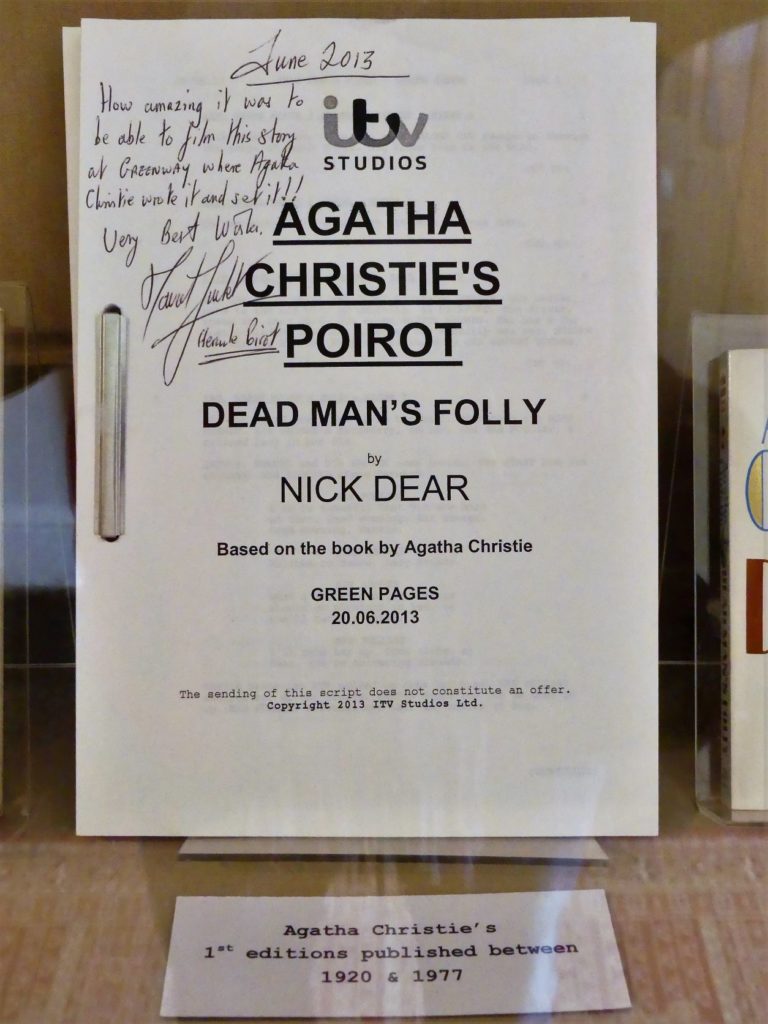

Agatha fans 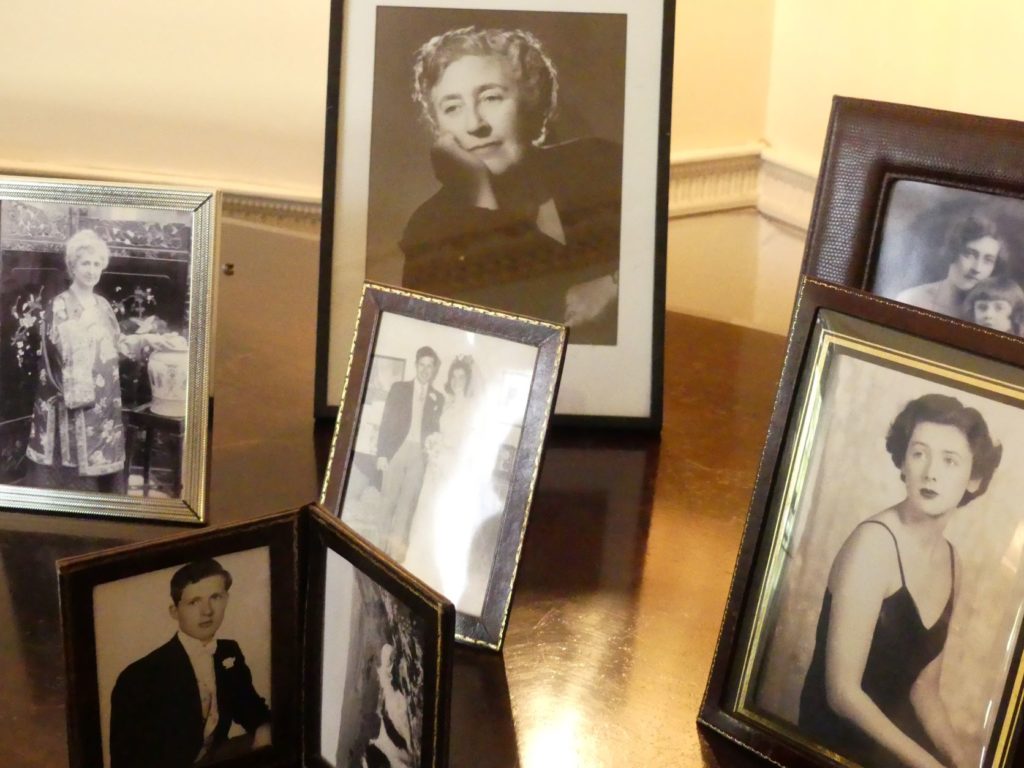
Each room in the house is chock full of cherished objects; as the Mallowans were passionate and avid collectors of archaeology, silver, books (including first editions of her novels), and dishes galore! Cupboards stacked full of them. Agatha was a woman after my own heart. You can still peek into her walk-in dressing room/closet and see all of her dresses, hats, shoes, and furs; all kept as if she had just left.
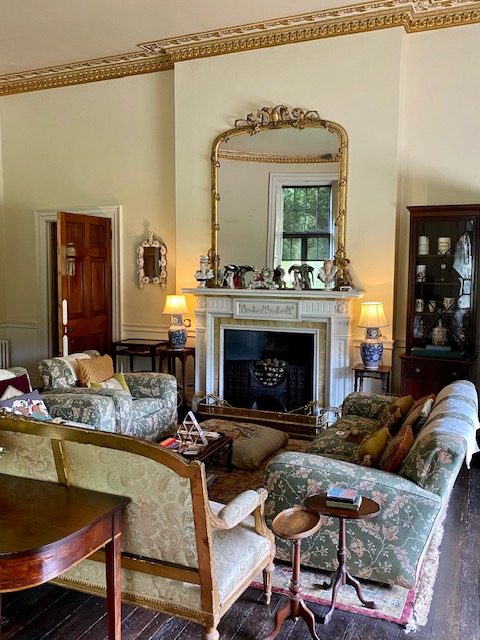
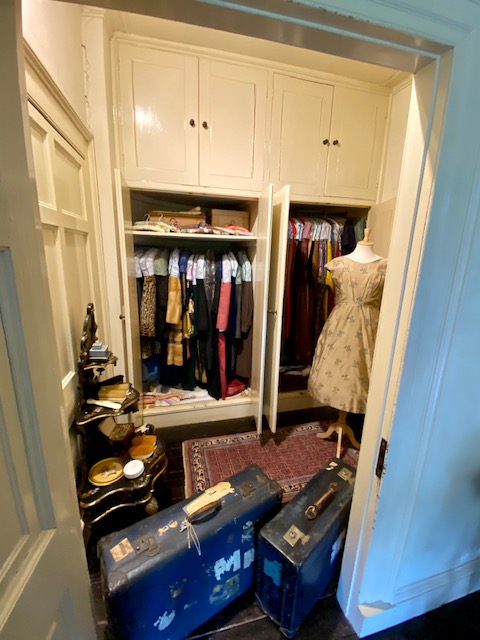
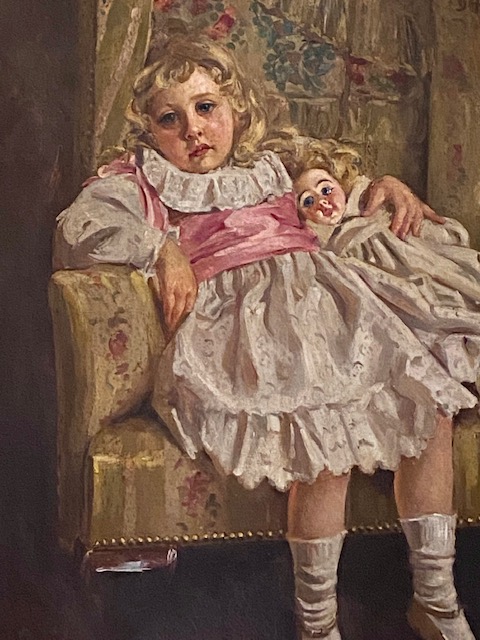
Young Agatha 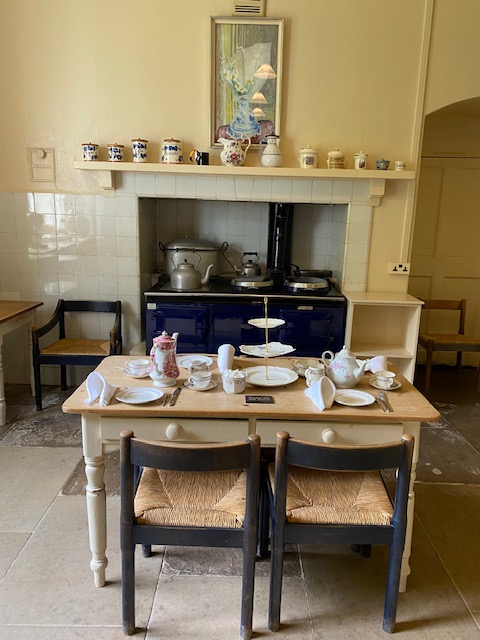
Five miles away, and from the 50’s era to the roaring 20’s …
COLETON FISHACRE
The manor house at Coleton Fishacre was built as a country home for Rupert D’Oyly Carte and Lady Dorothy, owners of the London Savoy Hotel and Savoy Theatre. He was known as an impresario – the D’Oyly Carte Opera Company, famous for the Gilbert and Sullivan operas.
It was built in the mid 20’s utilizing the Arts and Crafts Movement as influence: simplicity of design and quality of craftsmanship. Art Deco, too was at its zenith at the time and was incorporated into its interior décor. A glamorous abode, to be sure.
Though it appears like a big country manor from the outside, inside it’s intimate in scale, and reflects the family’s musical connections with its elegant living and entertaining rooms. The house has a warm, lived-in feeling and the furnishings reflect the lifestyle of the era. At any moment, you expect a Jazz Age flapper dancing down the stairs, ready for a “…shaken, not stirred martini” in the Grand Salon.
Coleman Fishacre has been twice featured in “Country Life” magazine: 31 May 1930 and 25 October 2007; the latter of which shows full color photos of the house (exterior and interior) and the spectacular 30-acre garden. The property runs down to the sea. It’s said that Rupert was sailing his yacht past this valley/Combe property, quickly made an offer to buy the land and build this beauty.
The extensive gardens ramble down the narrow Combe to Pudcombe Cove. Lady Dorothy collected rare and exotic plants in her travels. They’re able to flourish outside a tropical climate because the humidity is high due to the property’s stream and proximity of the Gulf Stream in this part of the Devon coast.
It’s a lovely, beautiful walk as you admire the colors and variety of May flowers; you forget that you’re strolling downhill to the water, and what goes down must come up, as we huffed and puffed our way back up.

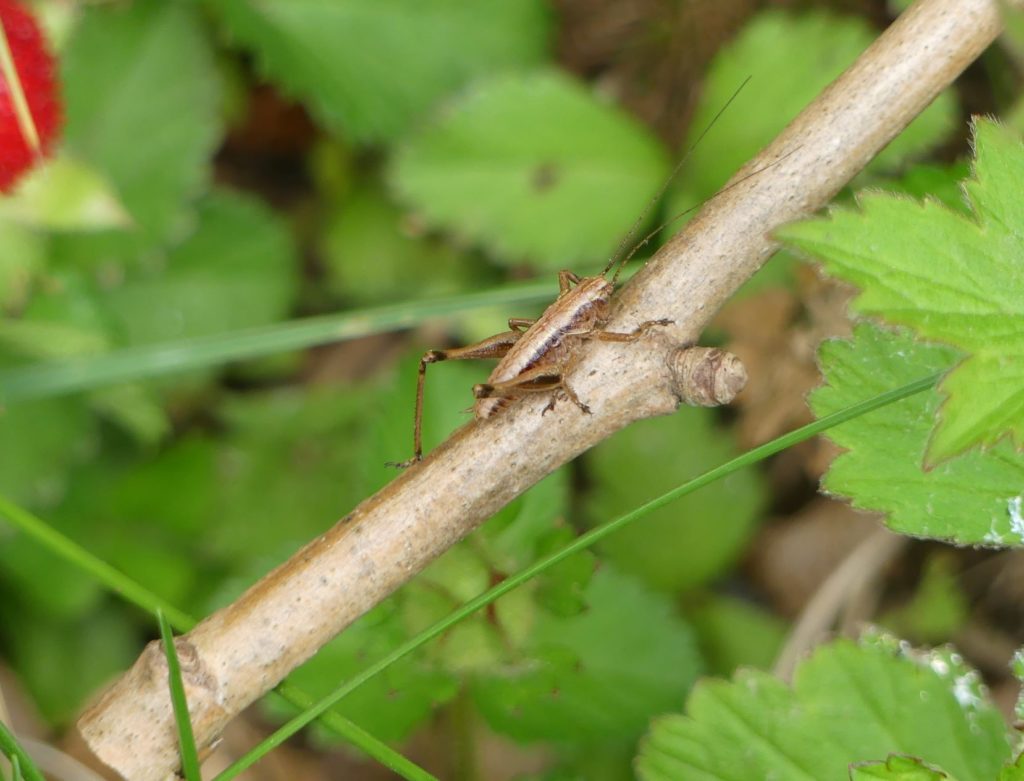
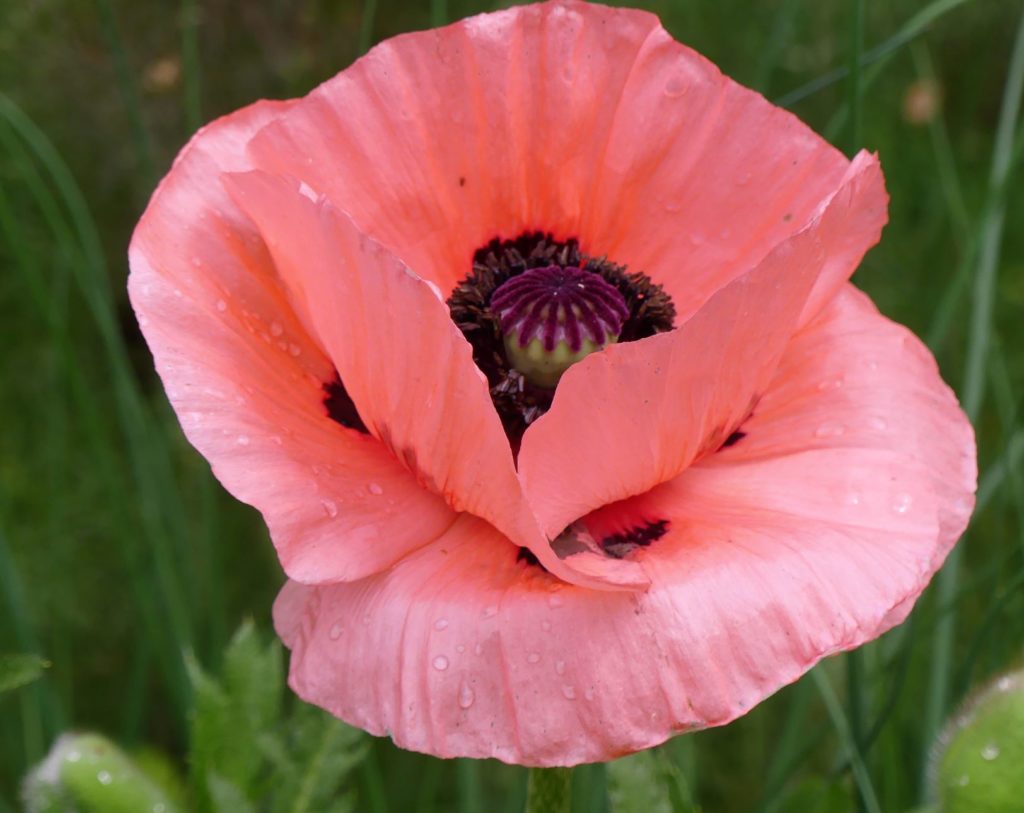
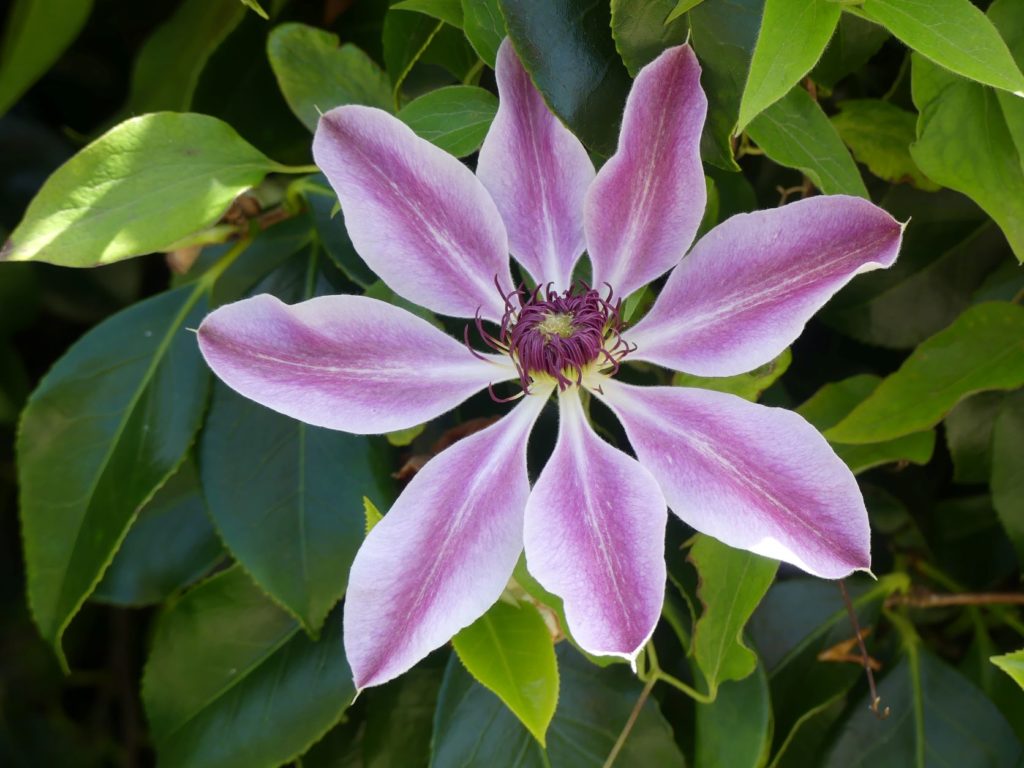
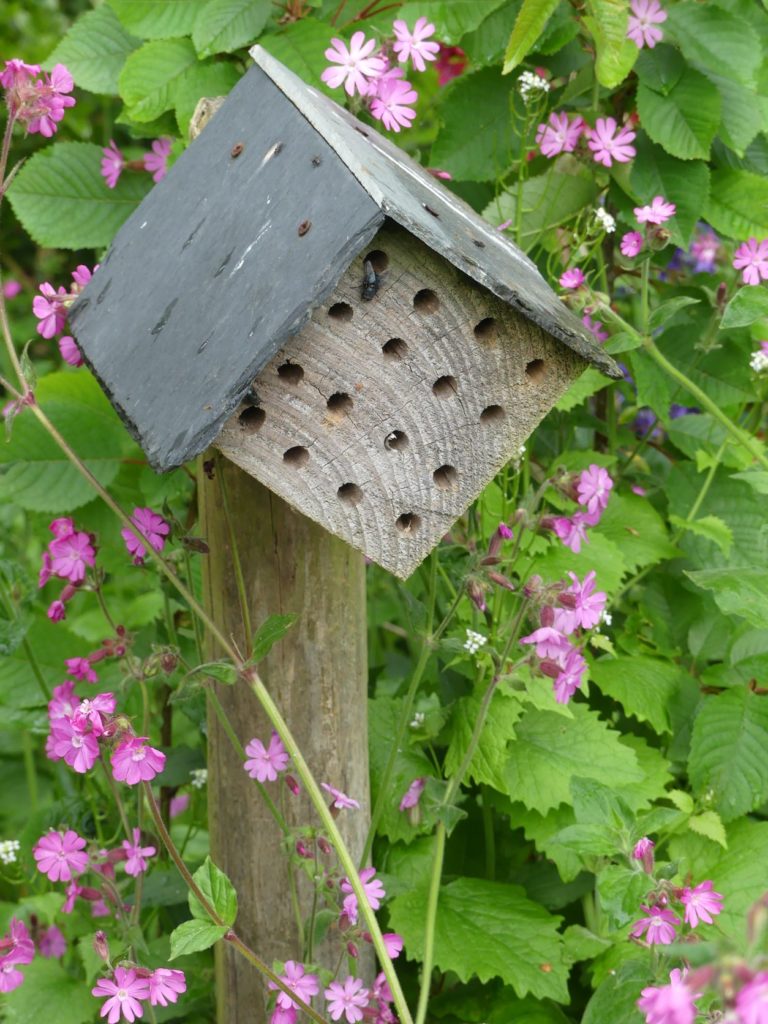
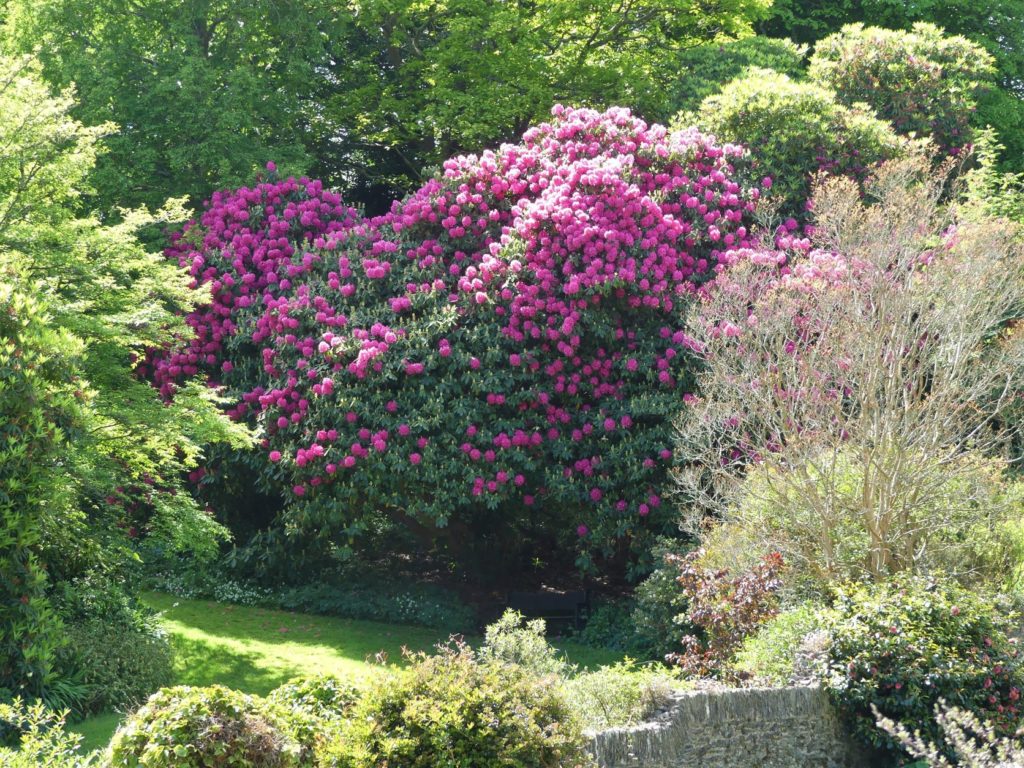
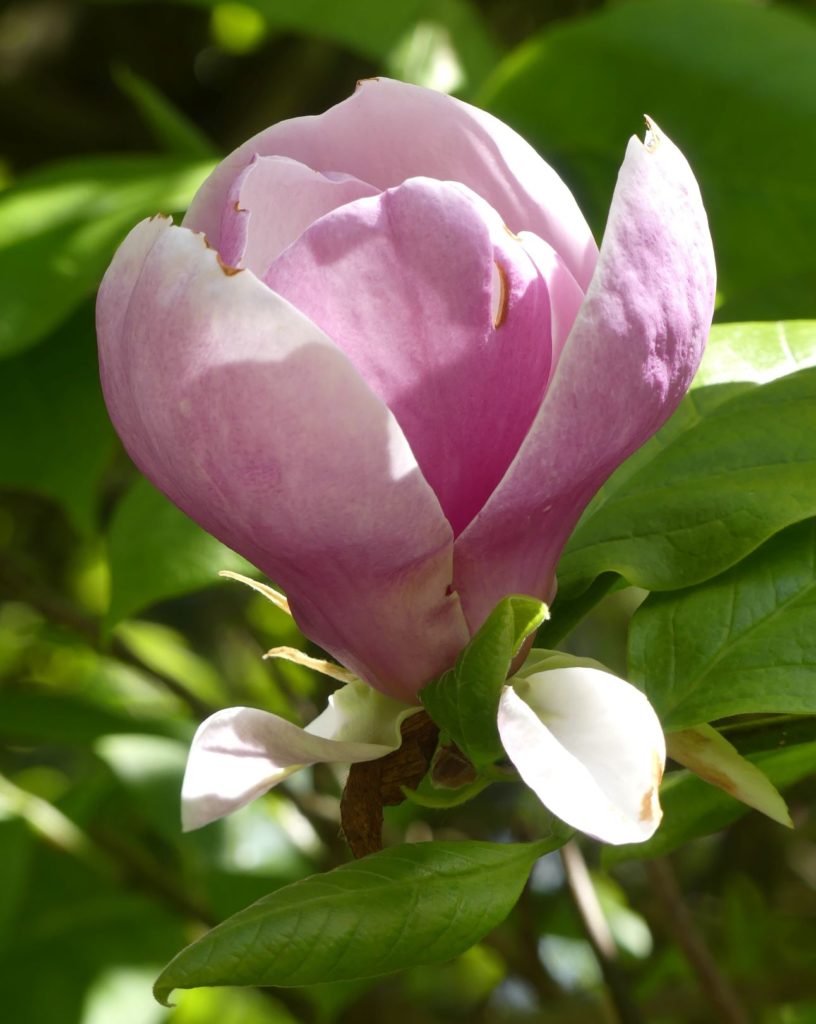
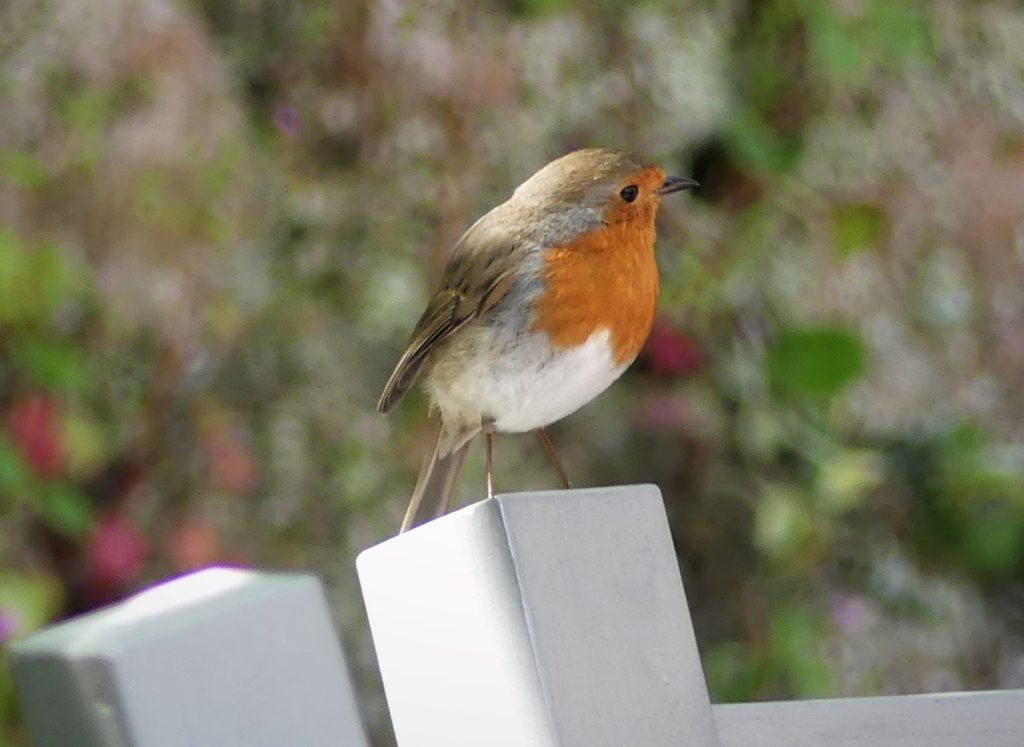


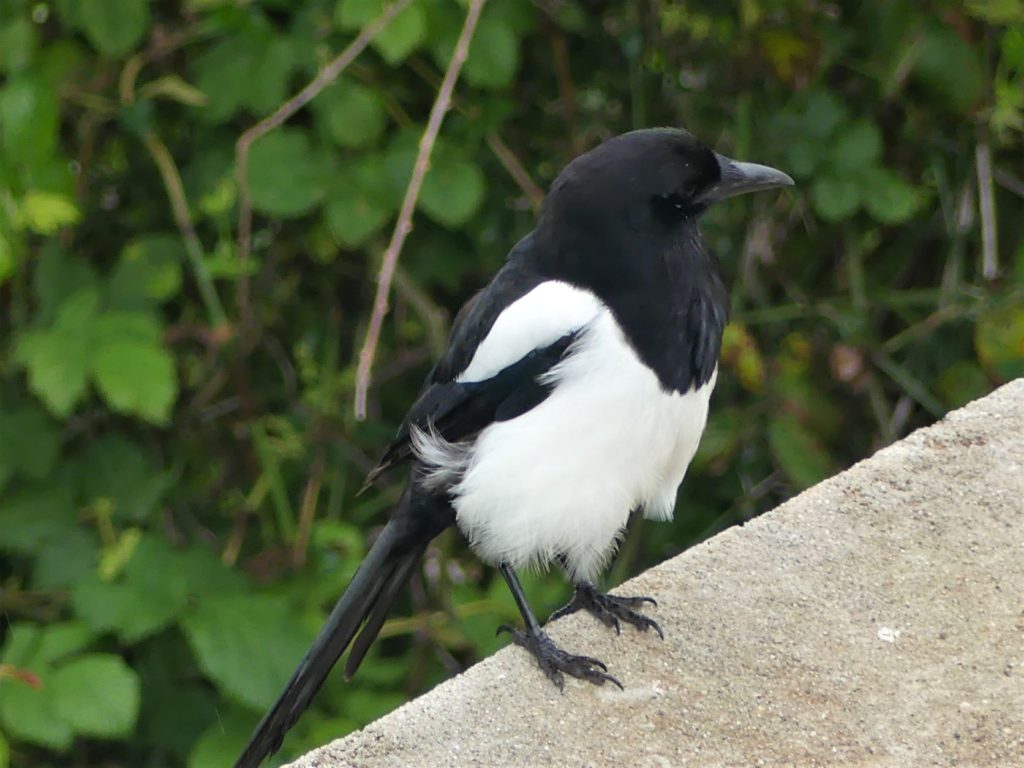
Magpie 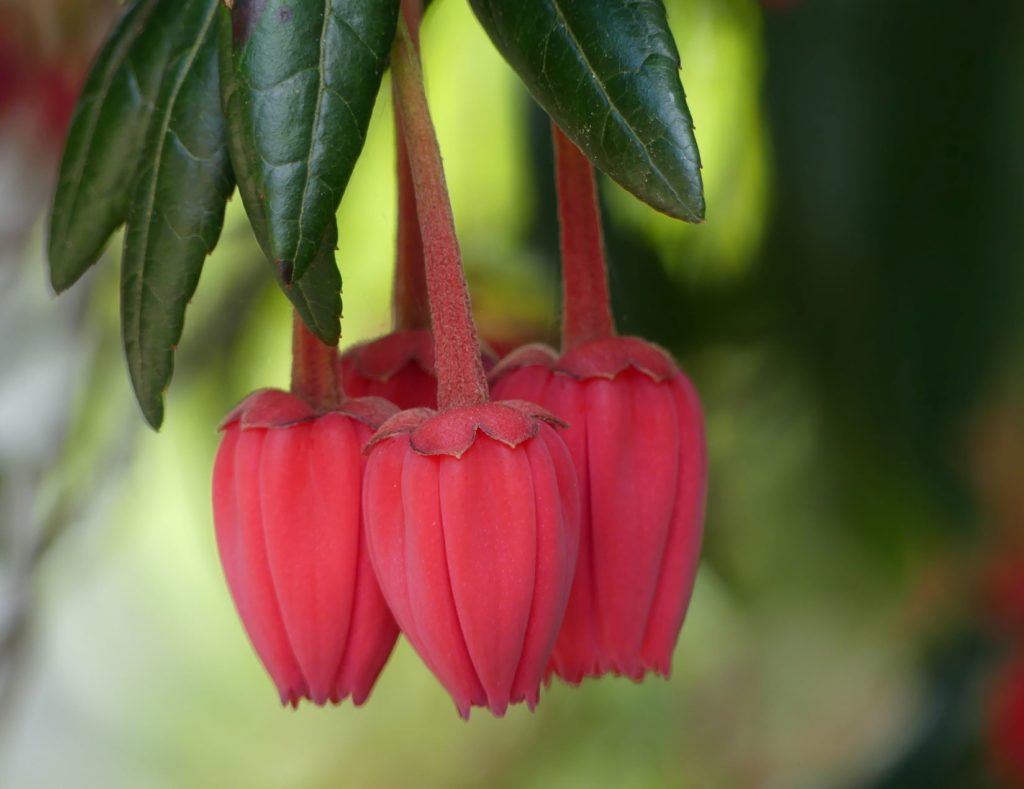
A light lunch followed at the nearby, clifftop Berry Head Hotel in Brixham, with fabulous views overlooking Torbay Bay. Here we captured the Fab Four and our time together. And later on, dinner in town at a new fusion Asian-Indian restaurant with a catchy name, Indi-Yang; the food was tasty, and being so hungry, we dove into our meals before thinking of photos. Oh well, a slight misdemeanor.
CASTLE DROGO
Castle Drogo is a modern country house masquerading as a mixed-revivalist castle in Devon, constructed between 1911 and 1930; and famous for being the last castle constructed in England. Julius Drewe, hugely successful founder of the Home and Colonial Stores, had it built and chose the site believing that it formed part of the lands of his supposed medieval ancestor, Drogo de Teigne.
The castle took many years to complete, as WWI and the economic downturn of the 1920’s hindered its building. It was finally completed in 1930, roughly a third of the size of the original 1911 design, and only a year before Julius died.
Many castle styles were borrowed in its design; sort of a mutt of a mix … from the medieval and Tudor periods, along with more minimalist contemporary approaches. Its defensive characteristics are purely decorative ones. And, David, there’s no fortified Keep tower!
Castle Drogo has all the modern amenities of the 1920’s: electricity, running water, toilets, telephone, and even includes its own hydro-electric plant! You could say that it’s self-supportive; including the vast array of gardens and game on the property for edibles. As you walked through its hallways and rooms, although richly appointed, you never get the impression of it being a home, as it’s rather stark, cold and impersonal.
From the Last Castle on to a very peculiar house …
A La RONDE
A la Ronde (translation: round) is an unusual 18th-century 16-sided house, built for two unusual spinster cousins, Jane and Mary Parminter.
The Parminter family, which traces itself back in Devon to 1600, had acquired considerable wealth as wine/port merchants. Jane grew up in London and became guardian to her orphan cousin, Mary. Upon her father’s death in 1784, she decided to embark on the European Grand Tour (usually taken by wealthy gentlemen). It was extremely rare in the 18th century for women to be independently wealthy, for even if they brought wealth into their marriage, it would become part of the husband’s property.
The two cousins were very close to one another and in 1795 decided to set up house together. They would live a secluded and somewhat eccentric life together until Jane’s death in 1811. The quirky house they built was completed in about 1796, and its design is supposedly based on the Basilica of San Vitale in Ravenna, Italy.
There are twenty rooms. All the ground floor rooms radiate out from the 35-feet high main hallway, named “The Octagon.” Between the main rooms were triangular-shaped closets with diamond shaped windows. Much of the decoration was made by the two creative cousins, with their excellent handicraft skills. There are also many mementos, treasures and objets d’art, most especially seashells, which the ladies brought back from their European Tour.

Shells galore! 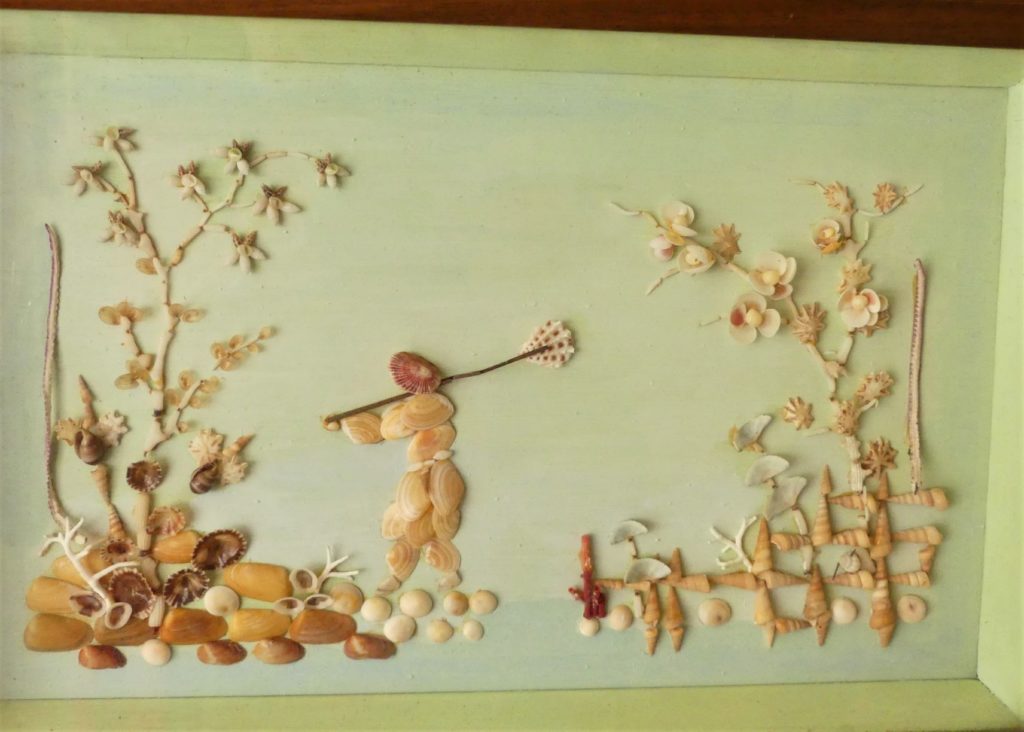
Shell picture. 
Shell chandelier. 
Shell floral arrangement. 
One had to look here, there and everywhere at all their eclectic collections. Who collected more: Agatha Christie or the Parminters? Close call.
Here’s my favorite part of A la Ronde … the hexagon construction of the house allowed for the rooms to be infused in natural lighting with the sun’s movement throughout the day; with the dining room receiving the last bits of daylight. So, you could start the day with breakfast facing East and slowly move about the house like a sundial during the day; all the time being bathed in sunlight. Clever bit.

Triangular closet. 

We treated ourselves to a proper and genteel Afternoon High Tea in the Drawing Room of The Royal Glen Hotel. This stately 18th-century Regency splendor was a former manor house, turned hotel, in seaside Sidmouth. It’s a beach resort town full of Victorian and Georgian architectural gems and sits beneath dramatic, giant red cliffs.
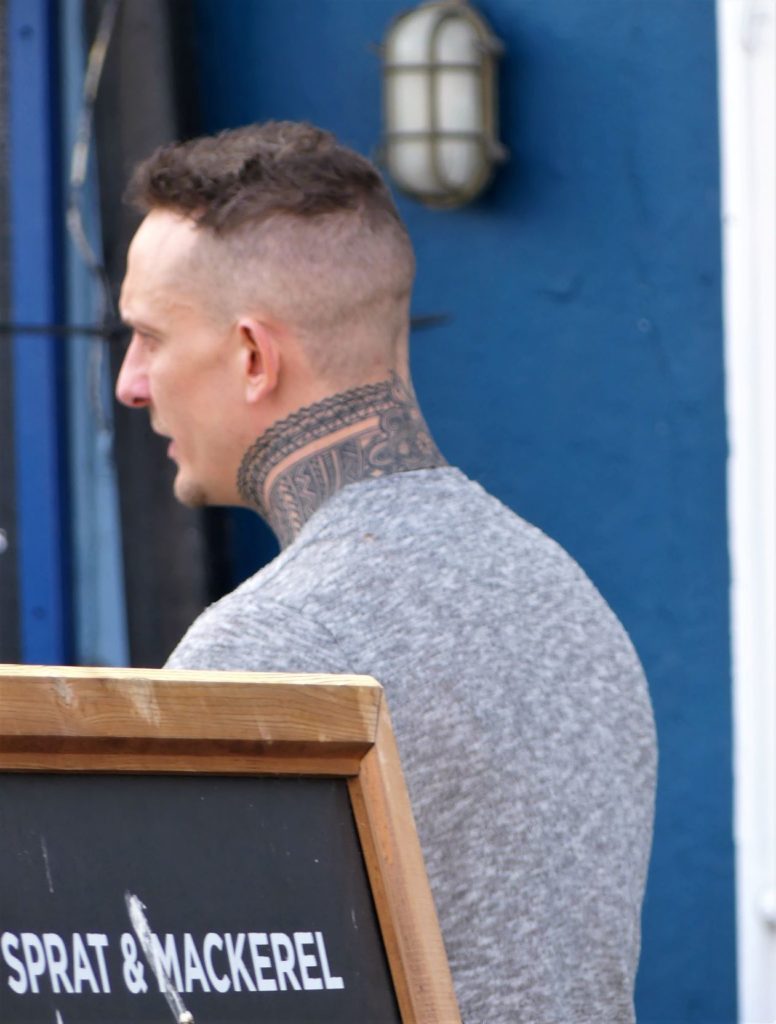
Tattoo “collar” 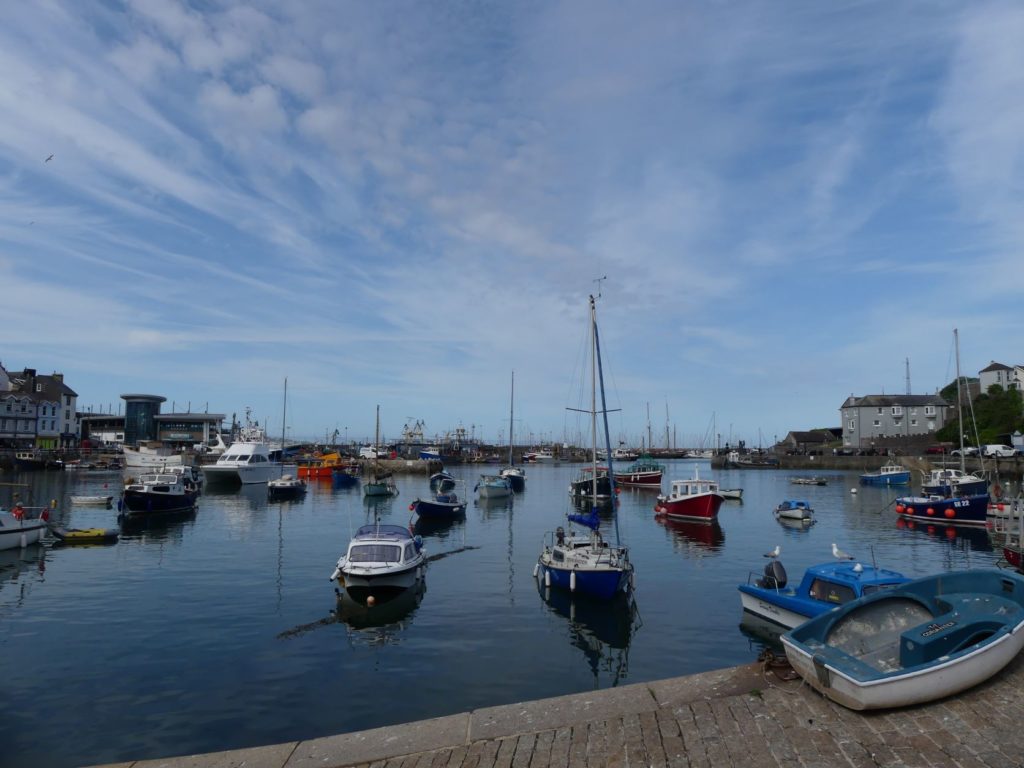
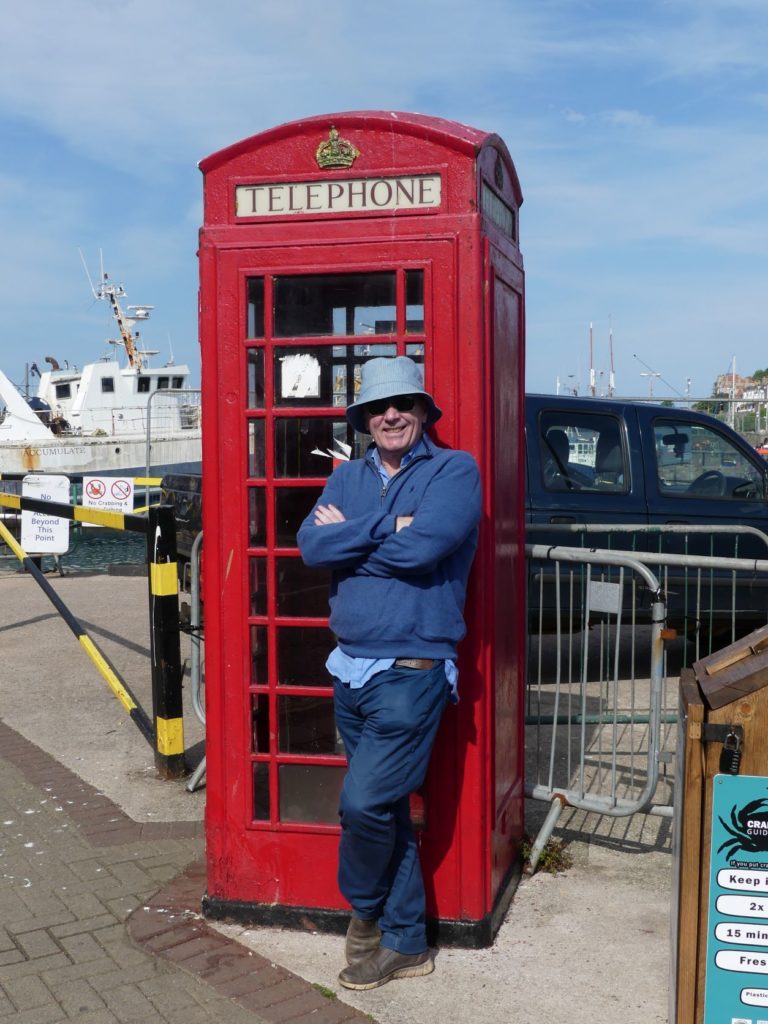
Jim 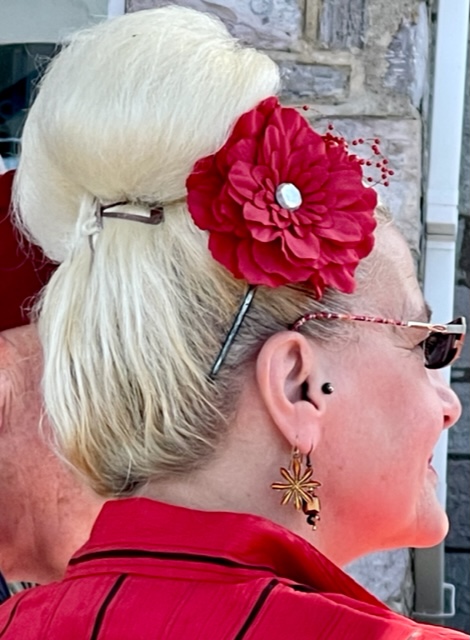
Bun chic. 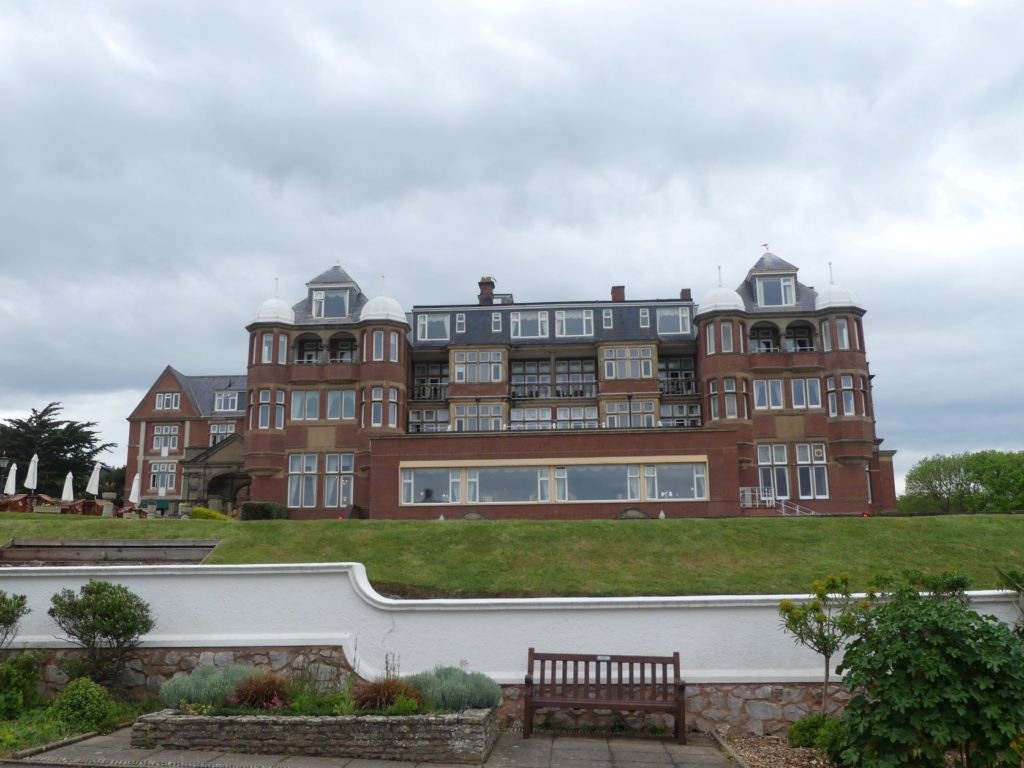
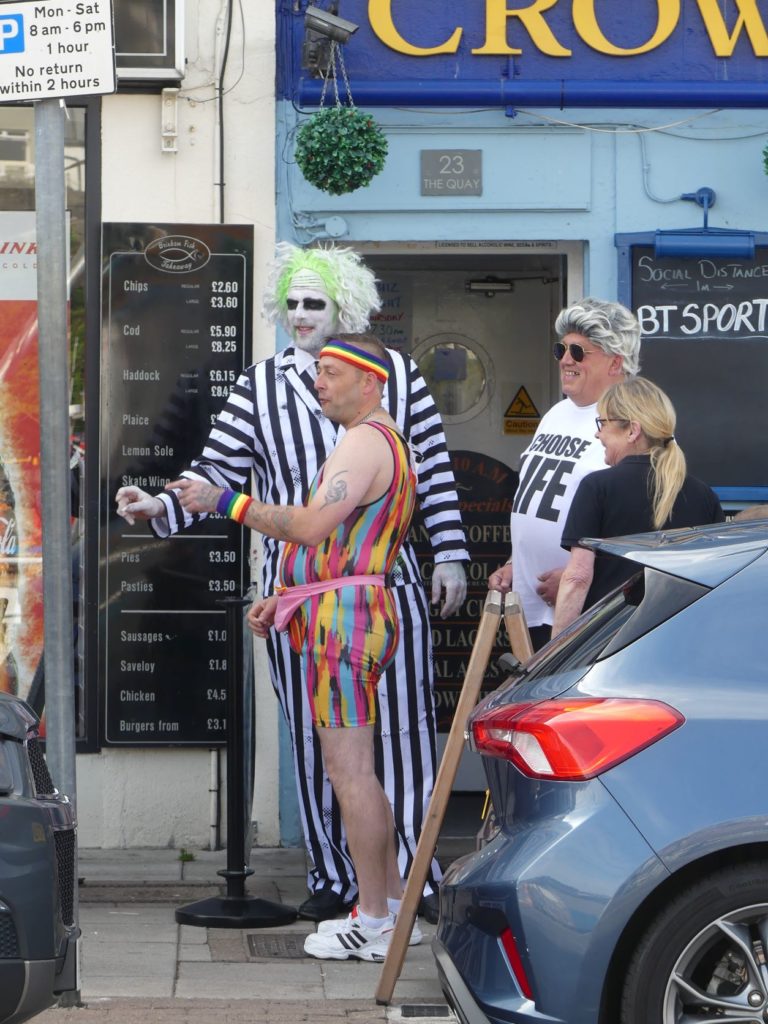
? !! 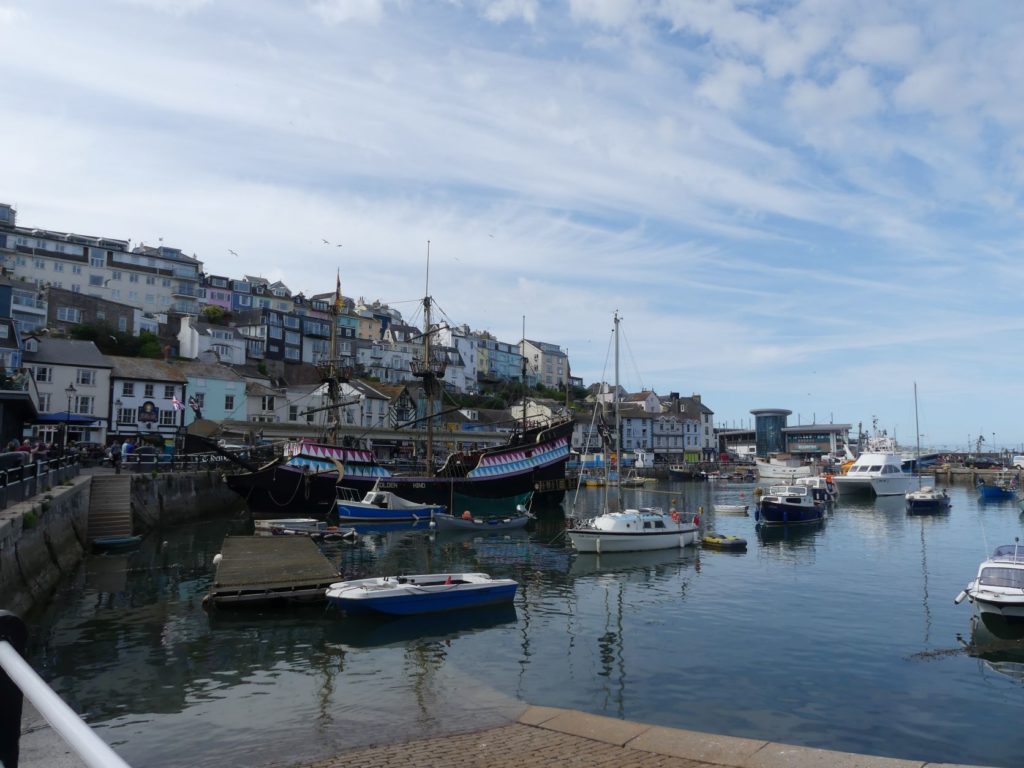

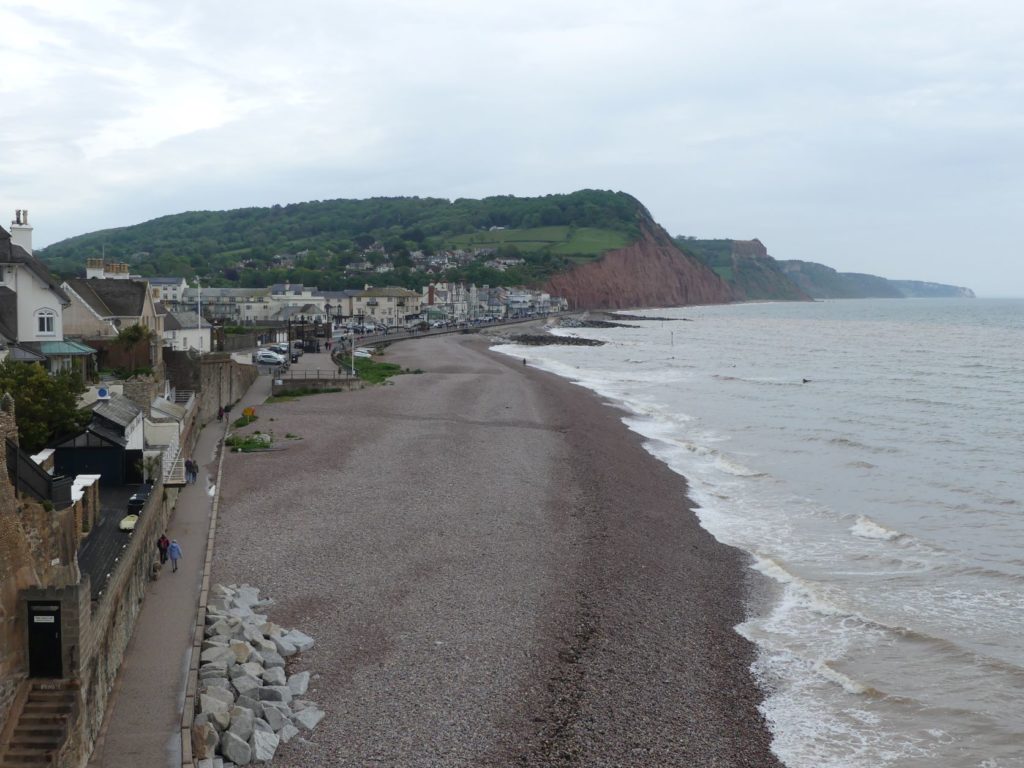
Red cliffs.
A commemorative plaque above the front door was erected to celebrate Queen Victoria’s diamond jubilee in 1897 and states that the Duke of Kent resided here the Christmas of 1819 with his wife, the Duchess, and their infant daughter, the future Queen Victoria.
The delightful High Tea had a lovely selection of cakes and savory sandwiches; served with a pot o’tea. A proper tea for a perfectly wonderful weekend.
Our Torquay lodgings, the Cary Arms & Spa, is a small, intimate 5✰ New England style inn off the beaten path; nestled seaside on secluded Babbacombe Bay. It’s located at the bottom of a cliff; the sea crashing against its wall foundations. It’s a hair-raising, alarmingly steep, single-track road downhill (think goat trail) with terrifying switch-backs, not for the faint-hearted. Of course, afterwards, we engaged the valet services to avoid any further angst and anxieties.
Conveniently, it’s just a short drive from Jim and Chris’s place. A plaque marks the villa at the top of the cliff where Oscar Wilde stayed in 1892. It was here, during his winter stay, that he completed several of his plays. We could see why he chose Babbacombe.
Our beautiful room provided a spectacular view, and outdoor deck, with exhilarating, fresh sea air. The inn is family run and you can tell by all the charming details and excellent service provided by a super friendly, accommodating staff. Complimentary sloe gin in the room was a fine and tasty aperitif; never had it before … a British red liqueur made with gin and sloes (a type of plum).
Best is the hotel’s hearty breakfasts with lots of delicious choices. David chose the quintessential British breakfast food – smoked kippers (it’s a whole herring, an oily fish high in Omega 3); his portion was huge, eating just one of the suckers. I enjoyed my Bap (a bread bun breakfast sandwich).
Here, too, we were introduced to the traditional Full English Breakfast plate. Full is an understatement – it should be the Giant, Humongous English Breakfast. You want some protein? You got it in heaps: bacon, Cumberland sausage (from Cumbria, NW England on the Scottish border), ham, eggs, hash browns, but minus the dreaded black pudding (blood sausage). Add in a tomato, portobello mushroom, toast and jam … voilà, the complete “Fry-Up.”
This was all served up by our Scottish, sharp-witted waitress. What a hoot she was! When I ordered the Devon Breakfast (the aforementioned full English), and before I could blurt out, she interrupted with, “I know, I know – no black pudding!” And when Jim joined us for breakfast our last morning, David and I just sat back and watched the comedy show, as the repartee between the two Scots began, quick-fire, wit to wit, tit for tat. Hilarious!
The Cary Arms is the kind of place, that if one wins the lottery, it would be a top contender to plop oneself down here, read an Agatha Christie murder mystery, and hang out for a spell.
Our weekend was full of all manners of manors (!). It’s time to get back to the castles and Bath time.
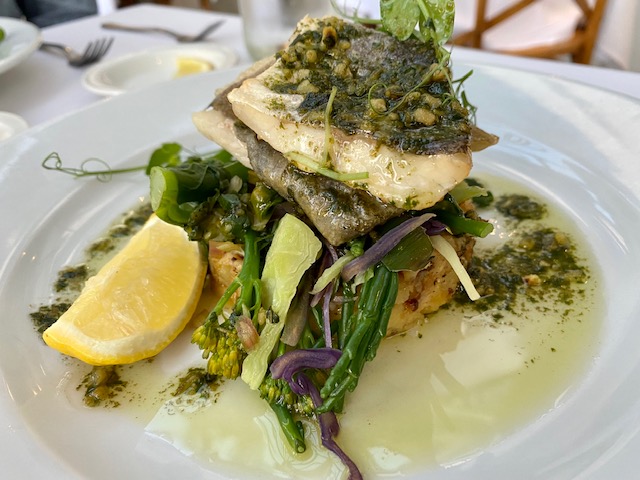
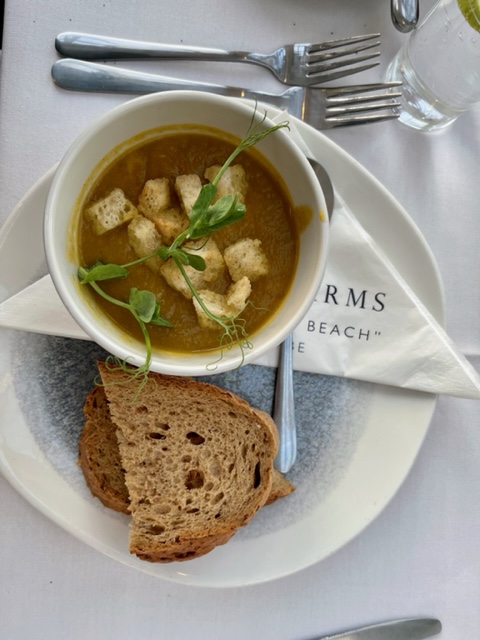
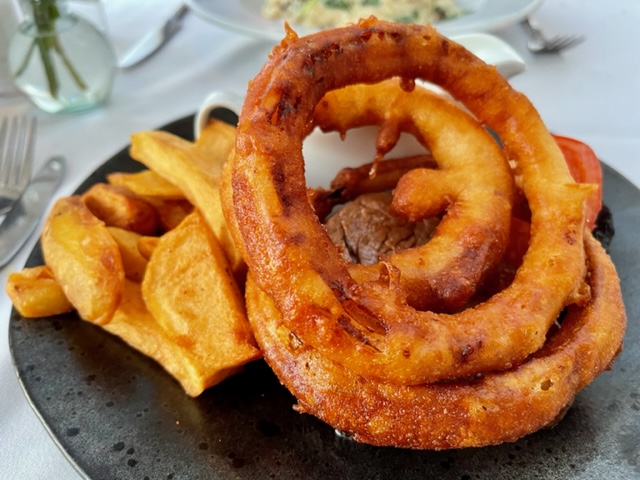

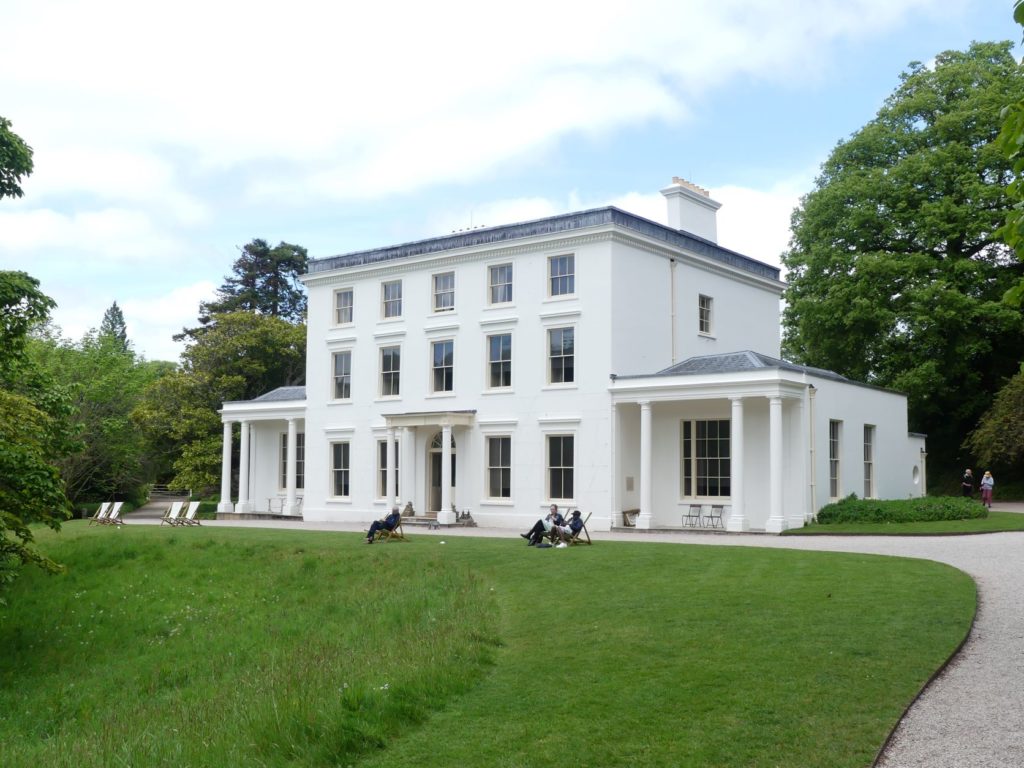

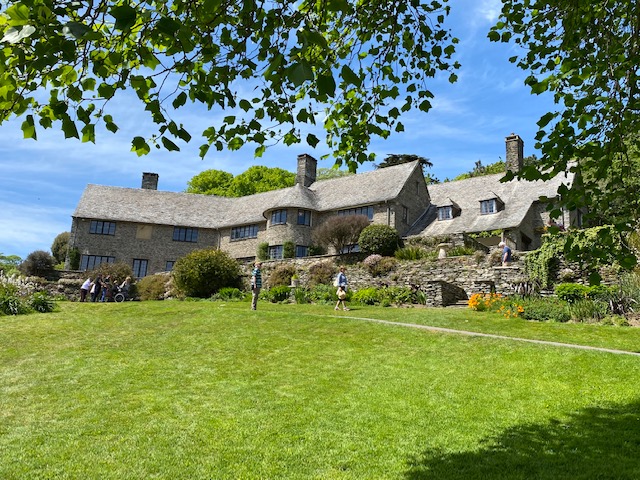


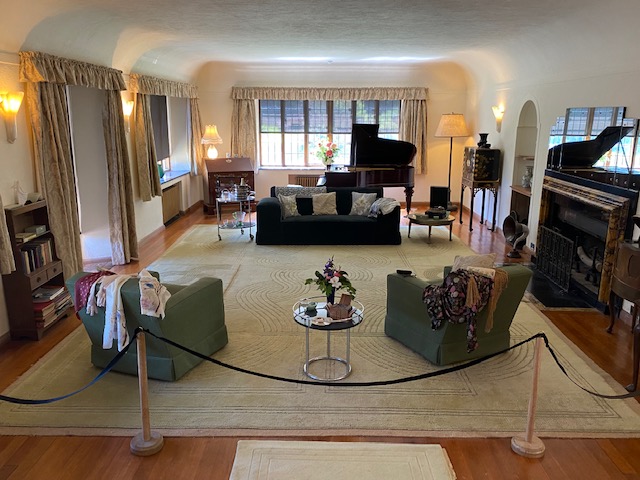
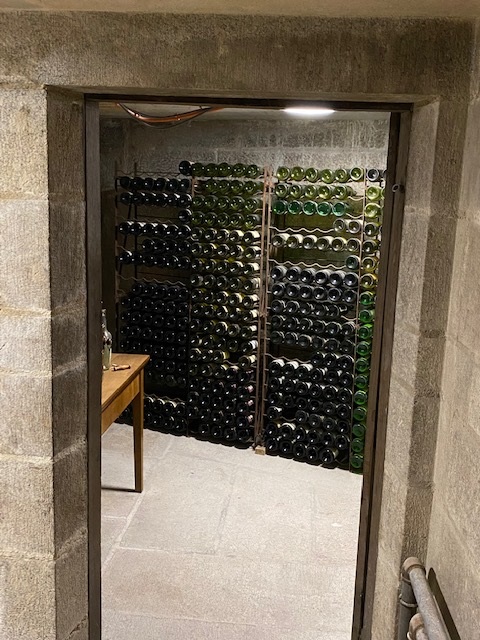
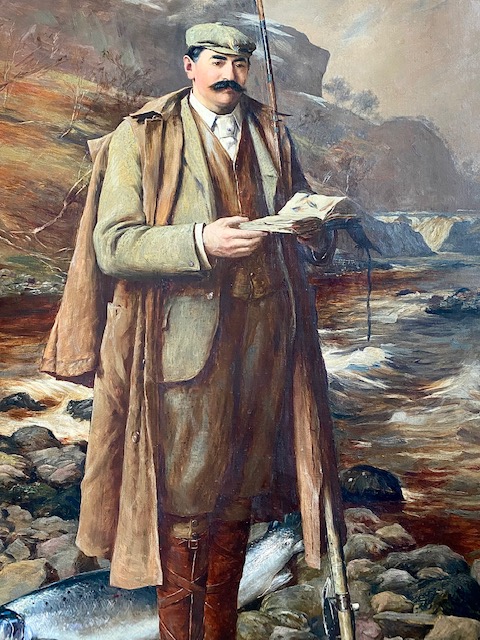
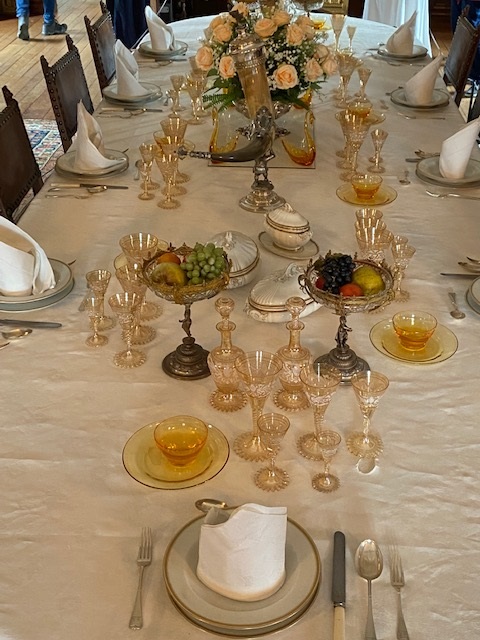
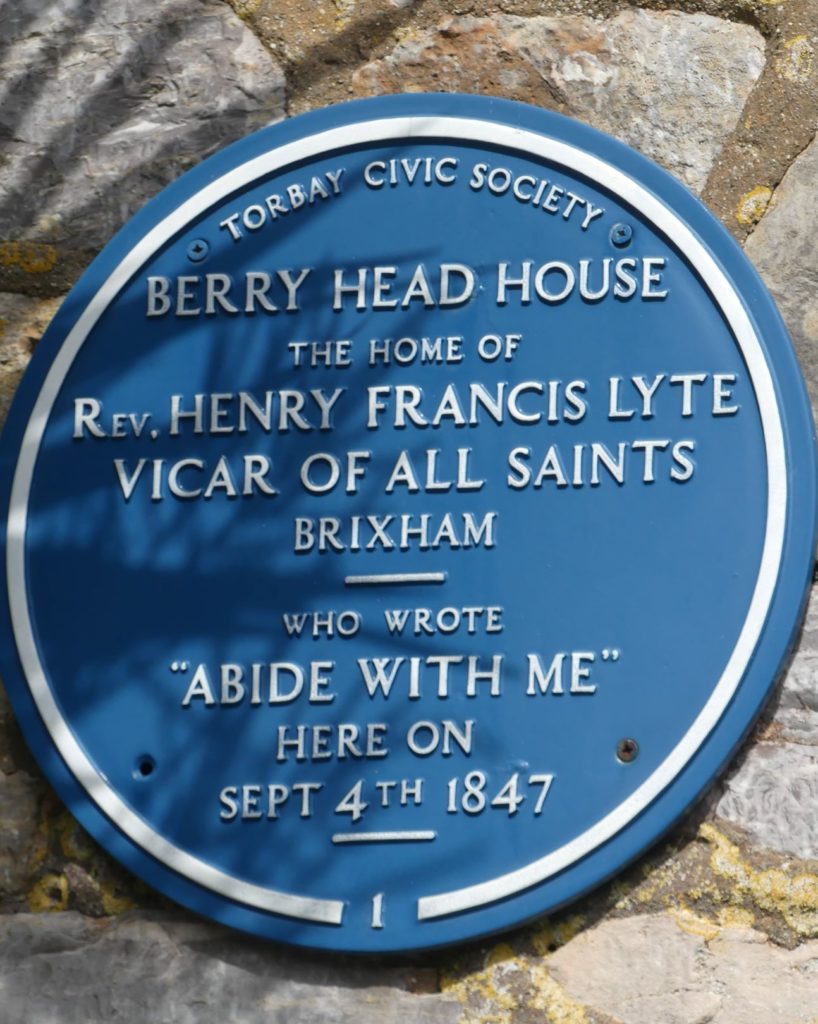

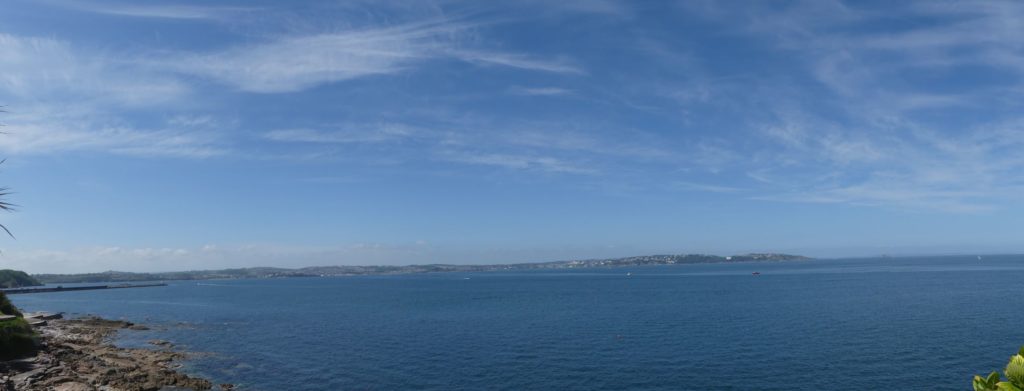

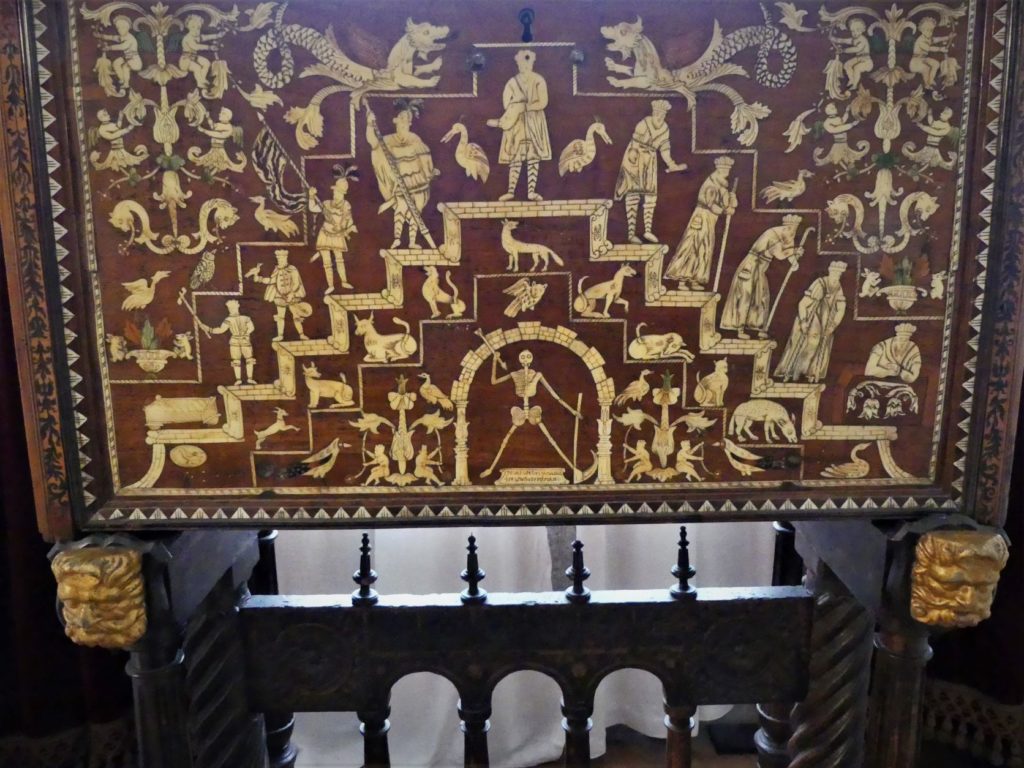

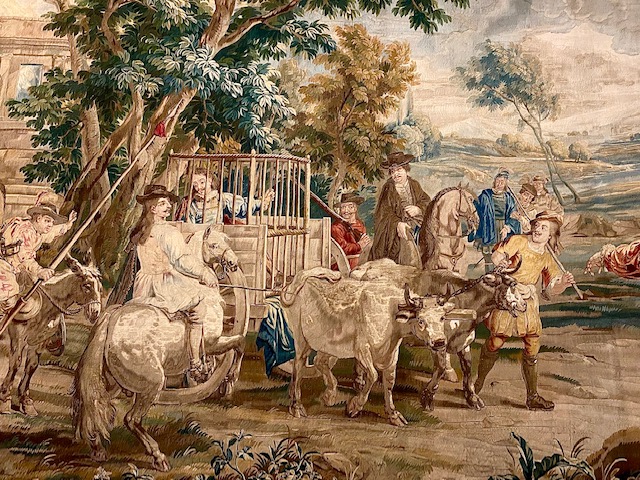
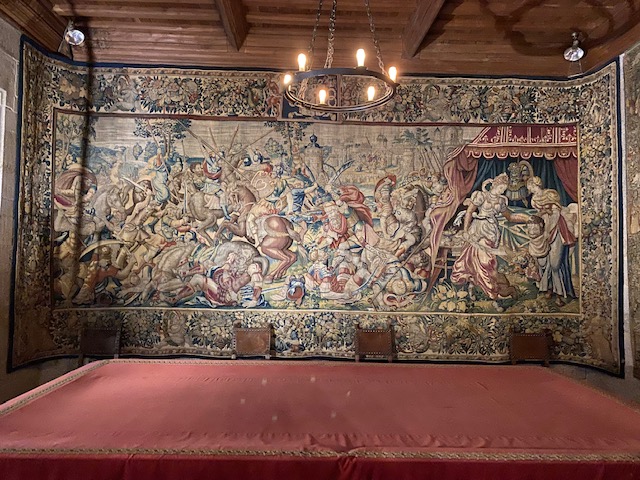
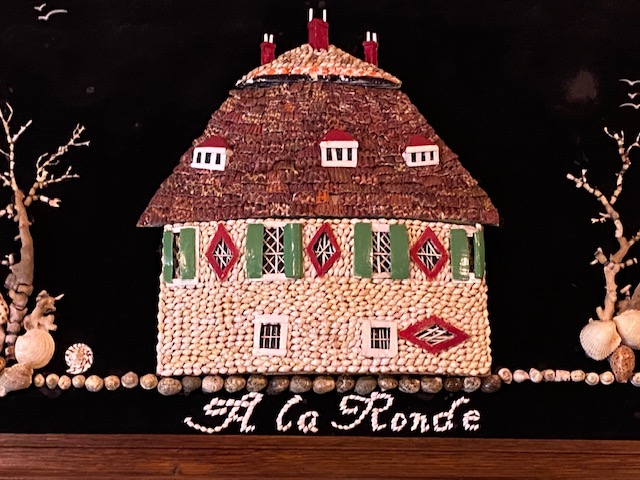


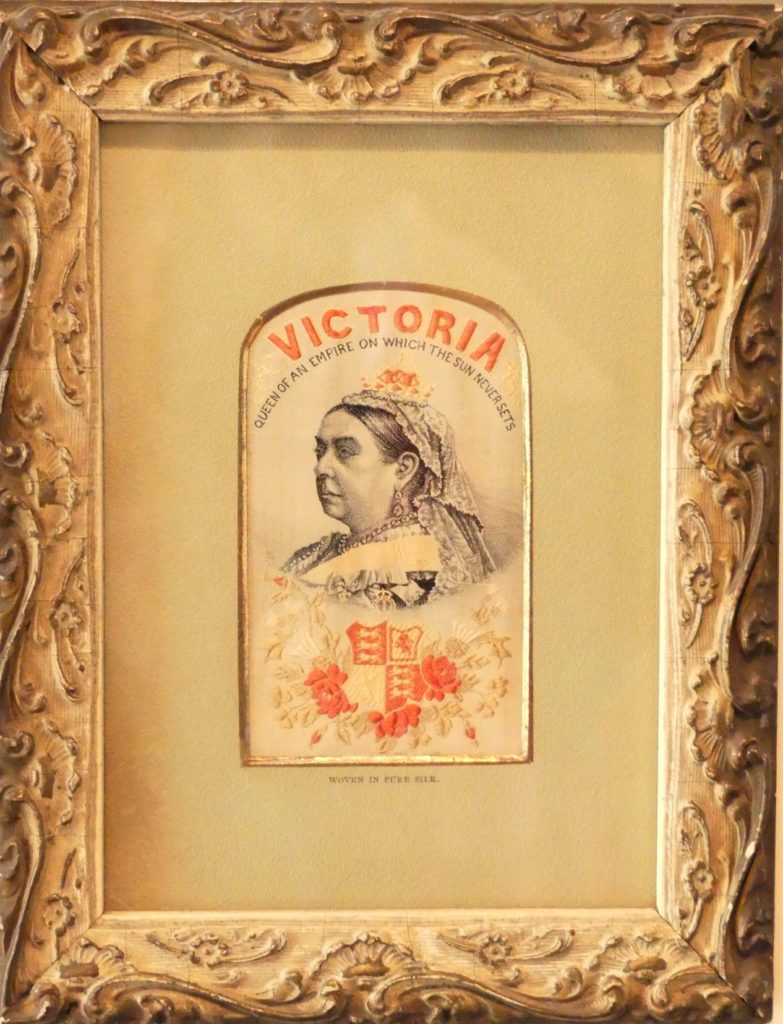


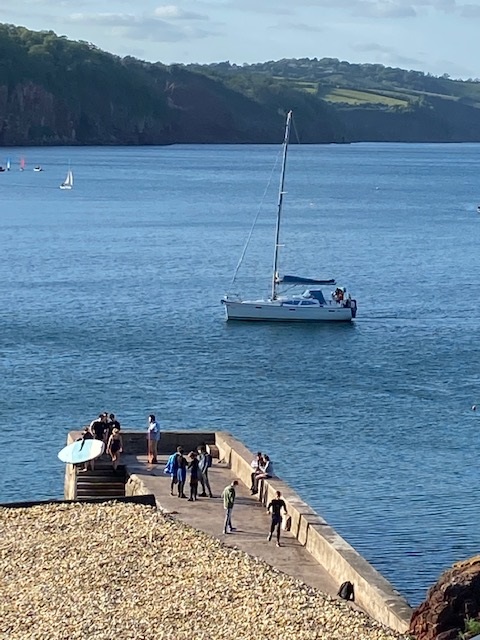



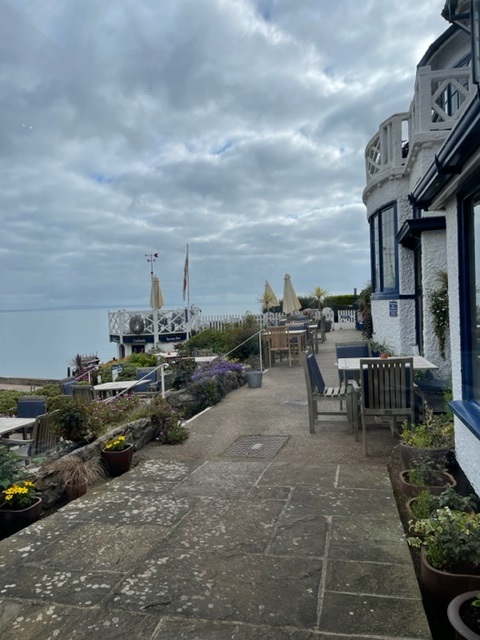

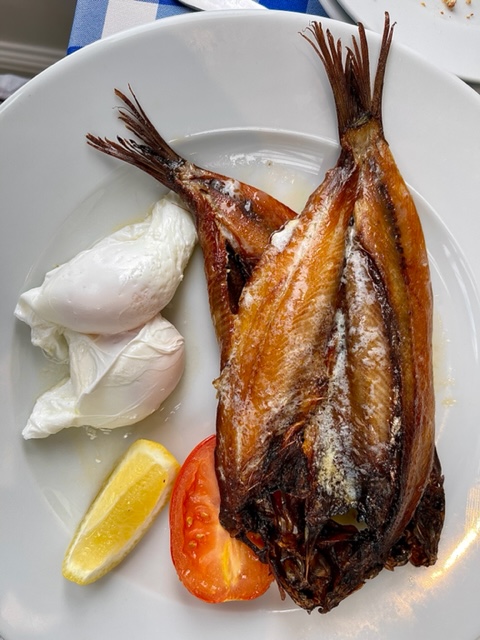
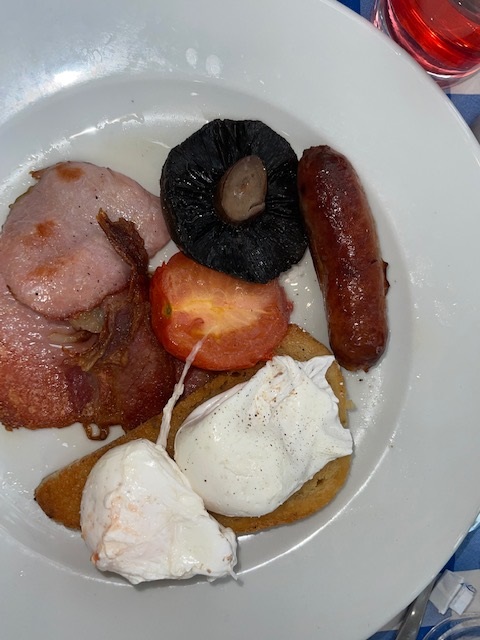
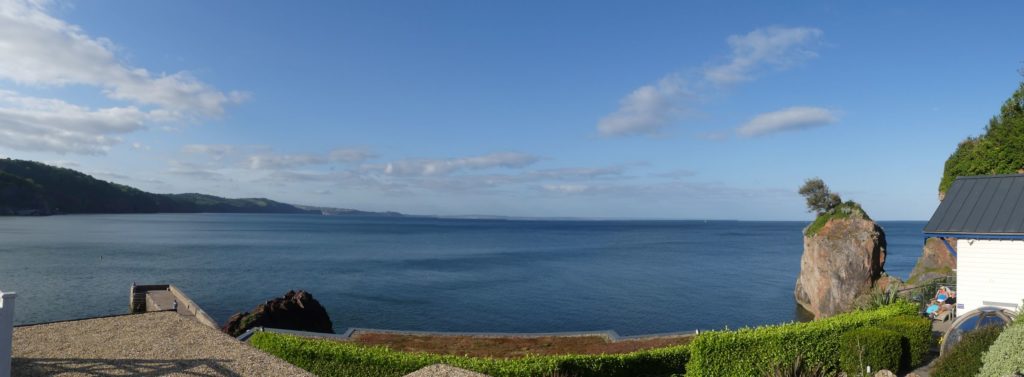
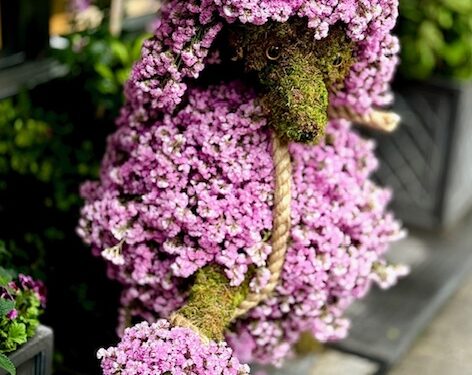


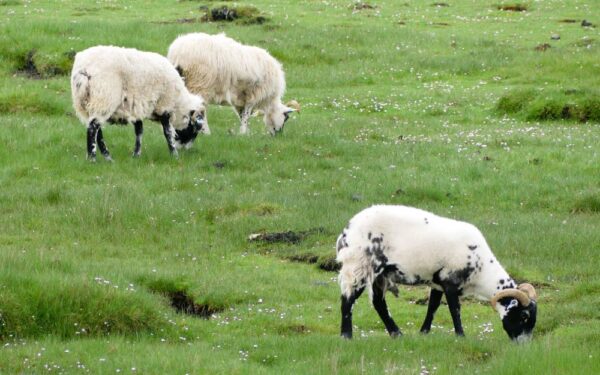
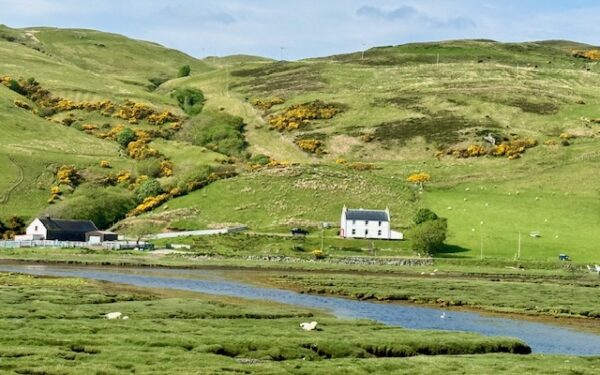
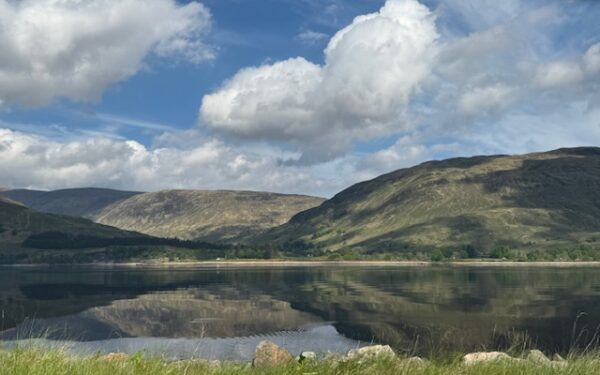
this trip has been magical– and a lot of FUN!
Jim is looking in fine fettle, kilt and all. As usual your photos are fabulous – the castles, historic homes, food, flowers, everything is splendidly displayed. Good for you, taking this castle tour. I know it was long awaited. Our best!
The pictures are great and the commentary is superb! Thankyou so very much for sharing! Be well and be safe! Abide With Me is my favorite hymn.
What an amazing adventure! That was intense! Thank you for sharing all the environments, ambiance, personalities and food—- glorious!!